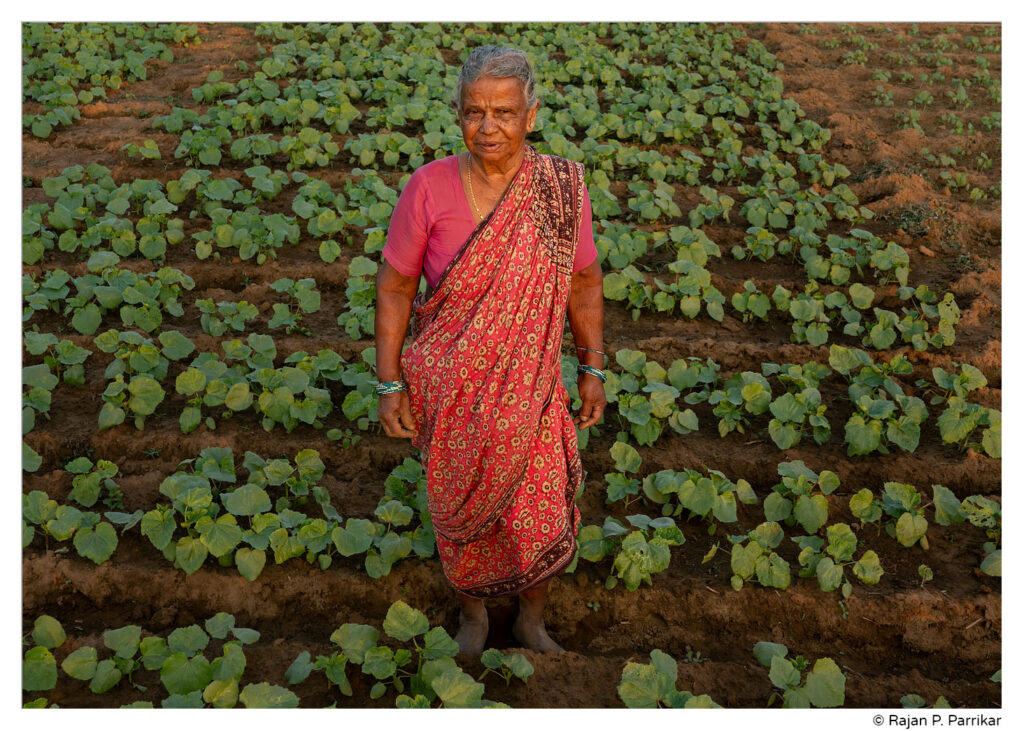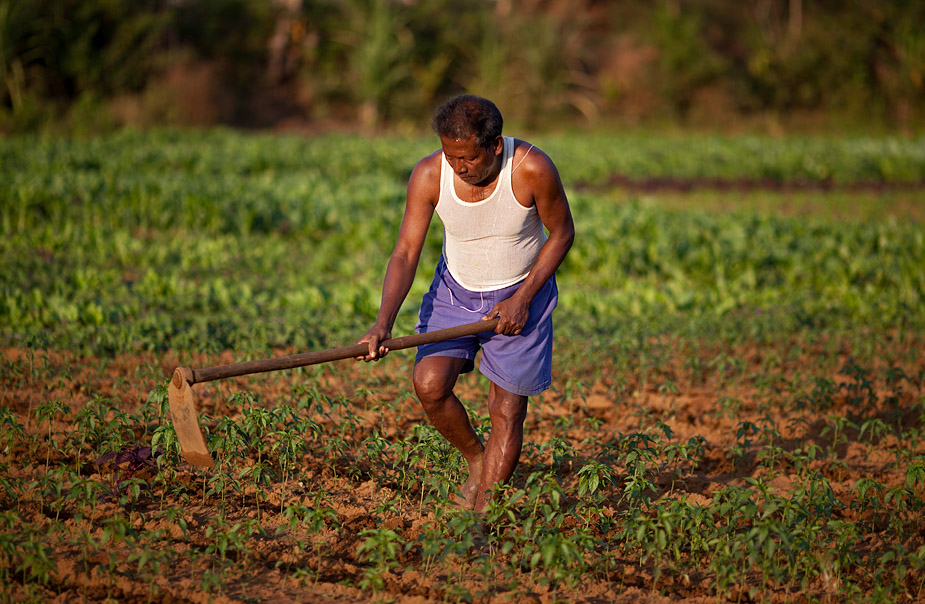
As the sun rises over the rolling green fields and the faint chirping of birds echoes through the serene Goan countryside, a typical day begins for a Goan farmer. This life, though rooted in simplicity, is rich with culture, tradition, and a deep connection to the land. Whether they cultivate rice, tend to coconut plantations, or engage in prawn farming, Goan farmers embody the spirit of resilience and sustainability.
5:00 AM – Dawn Awakens the Fields
The day begins early for a Goan farmer. Before the first light breaks, they are up and ready, armed with tools and a strong cup of black coffee or tea. The morning air is cool and refreshing, an ideal time to head to the fields or plantations.
For those involved in rice farming, the first task of the day is to inspect the paddy fields. Farmers wade barefoot into the waterlogged fields, checking for signs of pests or ensuring the irrigation channels are functioning properly. For coconut and cashew farmers, the morning involves clearing weeds, trimming fronds, or gathering fallen coconuts and nuts from the previous day.
7:00 AM – Feeding Livelihoods
Many Goan farmers have small livestock, such as cows, goats, or poultry. After tending to their crops, the animals are fed and watered. Goan farms are often self-sustaining, with cow dung used as organic fertilizer and hens providing eggs for the family.
This is also the time to prepare for tasks that will require hard labor, such as tilling the soil, planting saplings, or harvesting. Tools are sharpened, and plans for the day are finalized.
9:00 AM – A Mid-Morning Meal
Before the heat of the day sets in, farmers return home for a hearty breakfast. This often consists of pao (Goan bread) with homemade curries, or a light meal of rice congee paired with pickles or fish. Meals are simple, made from produce often grown in their own fields.
10:00 AM – Work Under the Sun
As the sun climbs higher, the real work begins. In the rice fields, farmers plant new saplings or harvest mature crops, bending low under the sun. Prawn farmers might head to the Khazan lands, where they check the sluice gates that control water levels, ensuring a balance between fresh and saline water.
For toddy tappers, this is the time to climb towering coconut trees to collect the sap used to make feni or urak, Goa’s iconic liquors. It’s a task that requires both skill and courage, as they balance on precarious footholds high above the ground.
1:00 PM – A Break for Lunch
Midday is the hottest part of the day, so farmers take a break for lunch. Goan homes are often shaded and cool, offering respite from the blazing sun. A traditional meal of rice, fish curry, and seasonal vegetables is served, often accompanied by a small serving of homemade pickle or fried fish.
This is also a time for some rest. Many farmers take a brief nap, recharging for the rest of the day.
3:00 PM – Back to Work
By mid-afternoon, it’s time to return to the fields or plantations. Tasks like watering crops, collecting firewood, or transporting harvested produce to local markets are carried out during this time. Goan farmers often work alongside family members, turning farming into a communal activity.
For coconut farmers, this is the time to de-husk coconuts or extract their meat for oil production. Cashew farmers may start the process of roasting and shelling cashews.
5:30 PM – Winding Down
As the day cools, the farmer’s tasks begin to wind down. Animals are brought back to their shelters, tools are cleaned, and the day’s harvest is sorted. Children returning from school often help out with small tasks, learning the ways of the land from their elders.
For prawn farmers, this is the time to inspect their catch, often done with traditional nets. The prawns are sorted and prepared for sale or for the family’s dinner.
7:00 PM – Evening Rituals
Evenings in a Goan village are a time for relaxation and connection. After a bath to wash away the day’s labor, farmers gather with their families. Dinner is often a simple yet flavorful affair, with dishes made from the day’s harvest.
Villages come alive with the sounds of conversation, laughter, and sometimes music. Farmers might visit a local temple, church, or tavern to unwind and socialize with neighbors.
9:00 PM – Rest for Another Day
By nightfall, the Goan farmer day comes to an end. With the satisfaction of a day’s hard work, they retire to bed early, ready to rise again with the sun. The cycle of labor, tradition, and sustainability continues, rooted in the rhythm of nature.
A Life of Harmony and Heritage
The life of a Goan farmer is a testament to resilience, patience, and a deep bond with the land. While modernization and urbanization have brought challenges, their way of life remains a cornerstone of Goa’s identity. By preserving these traditions, Goan farmers not only sustain their livelihoods but also ensure that the legacy of Goa’s agrarian roots endures for generations to come.


